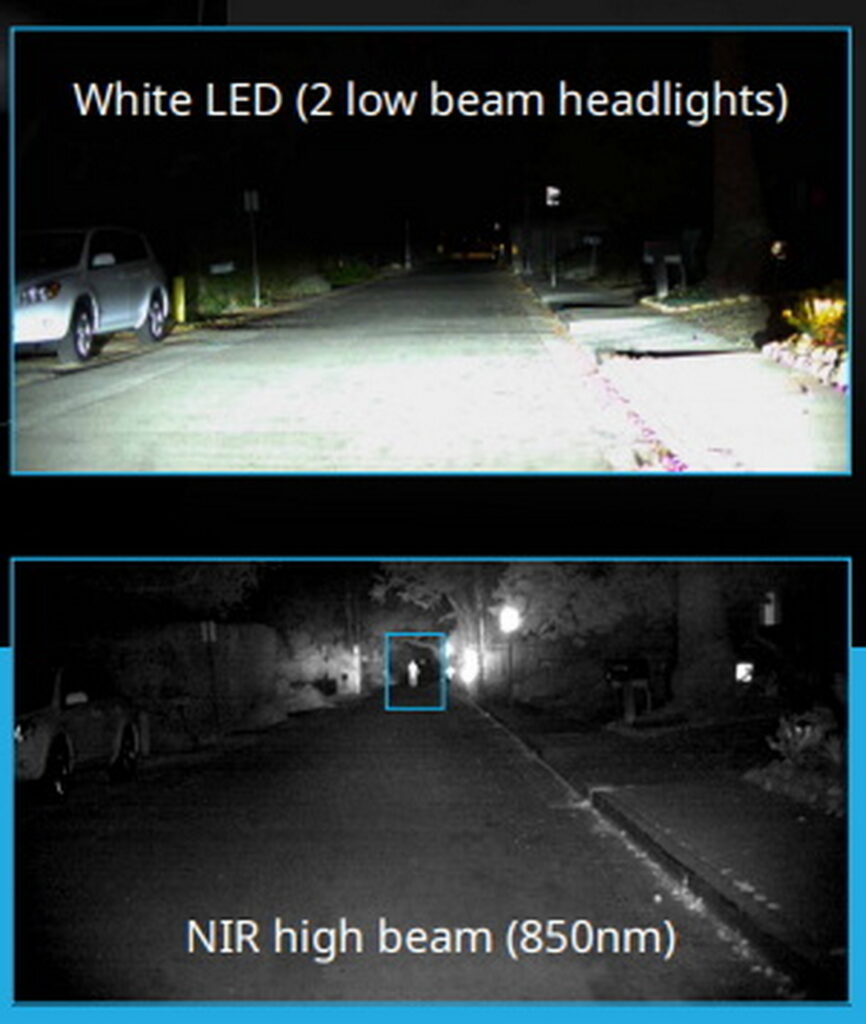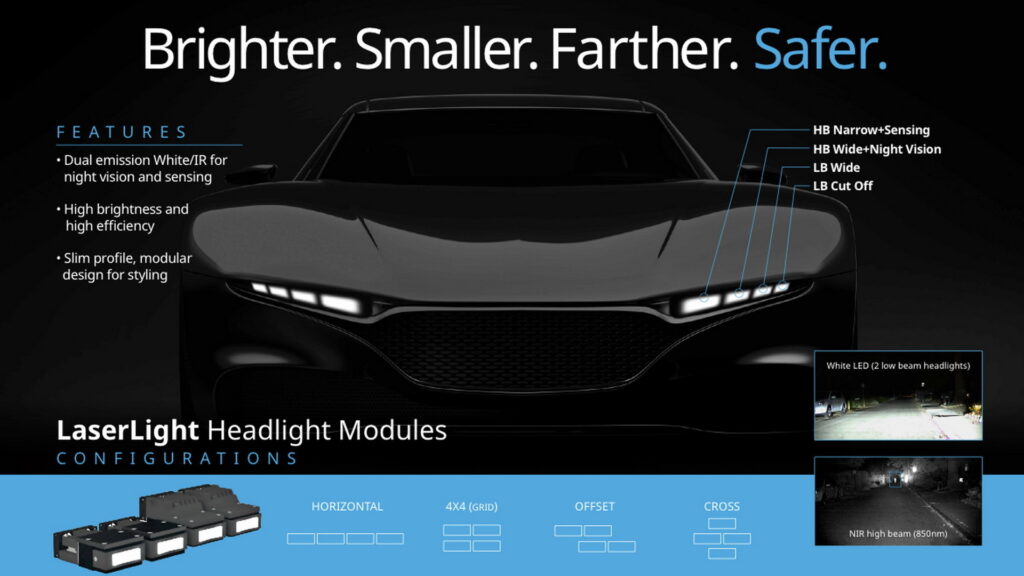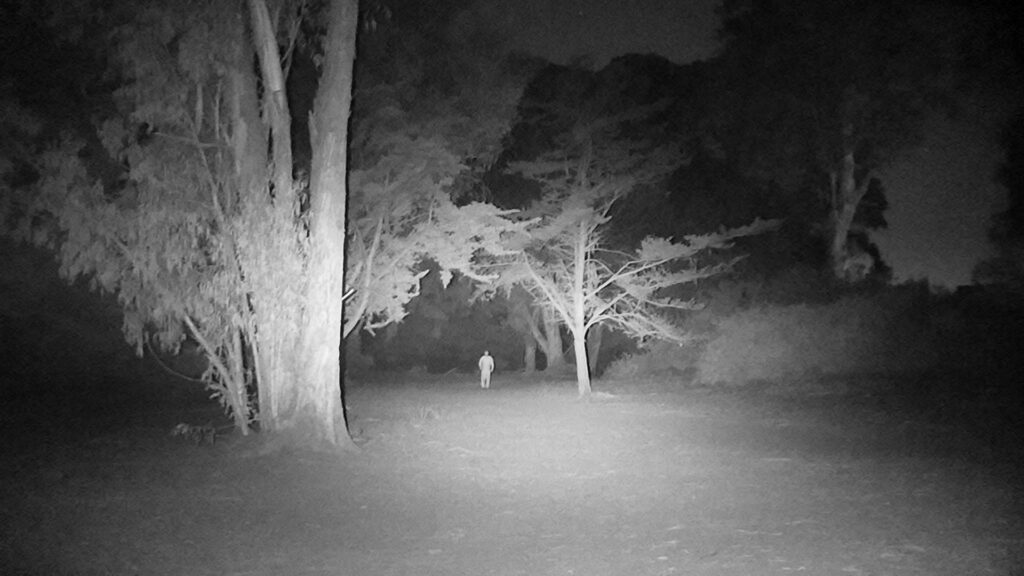Japan’s Kyocera has come up with an innovation in the field of lighting that could open up design opportunities while also making advanced driver assistance functions better.
The industrial giant announced at CES this week through its KYOCERA SLD Laser subsidiary that it is the first company in the world to introduce a headlight module that delivers bright laser light for high and low beams, as well as infrared light from a single unit. That means that one headlight system can provide illumination for both the driver and any infrared cameras a vehicle may have onboard.
Kyocera claims that its LaserLight headlight modules deliver high brightness, long range, illumination for drivers with sharp cutoffs, allowing them to see more of the road, without dazzling oncoming drivers. That, it says, will lead to better safety scores from testing agencies like the Insurance Institute for Highway Safety (IIHS), which often complains about headlights, especially on taller vehicles like pickup trucks.
Read: Porsche’s New HD Matrix Headlights Use Over 16,000 LEDs To Project Up To 600 Meters

Meanwhile, the infrared light provides better visibility for night vision cameras. In addition, it enables new forward lighting functions, including 3D flash and LiDAR sensing, which could be helpful for autonomous driving functions.
The company calls this ability to emit both white light and infrared light, “dual emission,” and says that it is not possible with LED lighting elements because they are incapable of being modulated at high enough speeds.
Both types of light emanating from one source, means that the actual headlight modules can be smaller, giving automotive designers more packaging freedom. The LaserLight elements are arranged in sets of four per headlight: two for low beams and two for high. The emissions patterns can be calibrated for either SAE or ECE/CCC regulations. In addition, Kyocera says that its laser lighting can also be built into fiber optics. That, it suggests, could be used by automakers that want to illuminate their logo or their grille in creative ways.
This technology has already been used by podium-finishing vehicles at the Baja 1000 off-road race, as well as in other forms of motorsport. Applications, though, can extend to the avionics, railway, or marine industries. Now, though, it says it’s ready to supply headlights to OEMs and their suppliers.











